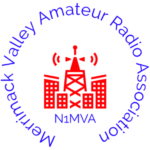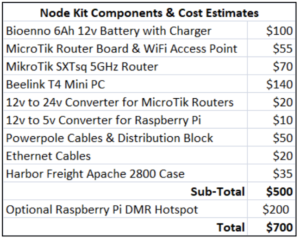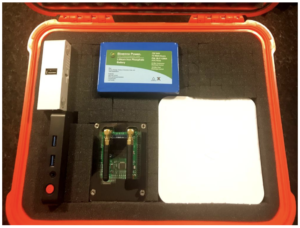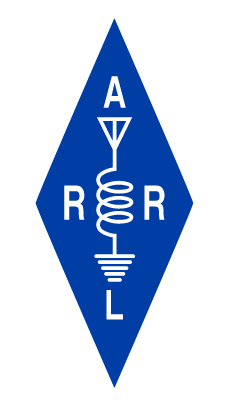 The Merrimack Valley Amateur Radio Association (call sign N1MVA) was formed in August 2022 by eight NH ARES members. ARES is a program, not an entity that could own equipment or fundraise. Our goal is to establish the MVARA as an organization that may own equipment and fundraise to support the emergency communication mission. The MVARA is a registered NH nonprofit corporation and a federal 501(c)3 charitable organization, and is registered with Amazon Smile. The MVARA has been accepted as an ARRL affiliated club. Current membership is 22 with 91% being ARRL members.
The Merrimack Valley Amateur Radio Association (call sign N1MVA) was formed in August 2022 by eight NH ARES members. ARES is a program, not an entity that could own equipment or fundraise. Our goal is to establish the MVARA as an organization that may own equipment and fundraise to support the emergency communication mission. The MVARA is a registered NH nonprofit corporation and a federal 501(c)3 charitable organization, and is registered with Amazon Smile. The MVARA has been accepted as an ARRL affiliated club. Current membership is 22 with 91% being ARRL members.
Our current focus is collaborating with the New England Digital Emergency Communications Network to interconnect DMR sites with microwave radio links. The microwave links backup internet connections when the internet is disrupted, thereby making the DMR system more resilient for routine and emergency communication. Presence on the towers also extends our microwave network. The first installation is a link between the Crotched Mt DMR site, which lost internet when the provider discontinued service to the area, and the South Uncanoonuc DMR site which has a pre-existing 5GHz link to the internet at the Bow, NH DMR site. DMR traffic flow can be evaluated from the repeater to the new Part 97 AREDN 5GHz link, then to the pre-existing Part 15 Ubiquiti link, and finally to the internet. The link has been operational since early October with only one occasionally recurring issue that can be corrected remotely. Its cause remains to be identified, part of our learning curve.
The main activity planned for next year is writing a proposal to ARDC for funding to expand the microwave backbone among DMR repeater sites within the context of the New England Division mesh network project. The backbone and network services would provide opportunities for other licensed operators who may wish to use the microwave network for various amateur radio purposes.
 There is a possibility of developing a STEM module about microwave IP networking. Lessons could be introduced with familiar microwave radios – cell phones and computer wifi – followed by modern battery technology, microwave and IP basics, and culminated by setting up a local microwave connection. Portable battery-powered microwave node kits – designed under Part 15 compliance for unlicensed use in school classrooms or Part 97 compliance for amateur radio use – are easily assembled with off-the-shelf components and deployed for demonstration and instruction. Kits can also be used as portable nodes for emergency and event communications.
There is a possibility of developing a STEM module about microwave IP networking. Lessons could be introduced with familiar microwave radios – cell phones and computer wifi – followed by modern battery technology, microwave and IP basics, and culminated by setting up a local microwave connection. Portable battery-powered microwave node kits – designed under Part 15 compliance for unlicensed use in school classrooms or Part 97 compliance for amateur radio use – are easily assembled with off-the-shelf components and deployed for demonstration and instruction. Kits can also be used as portable nodes for emergency and event communications.
Components for a portable microwave network node kit are shown in the table and photo. Total cost is about $500 plus shipping, including a Windows Mini PC. The Mini PC can be used to control an HF or a VHF radio remotely over the network for NBEMS, Winlink and popular weak signal modes. A Raspberry Pi could be substituted for the Mini PC if there is no need for Windows software, decreasing cost proportionally.

Battery charger, 12v converters and cables are stowed underneath.
